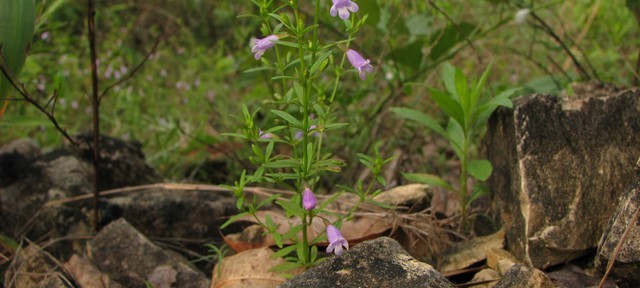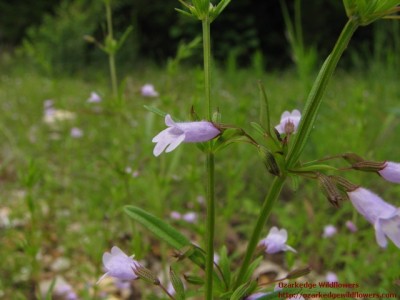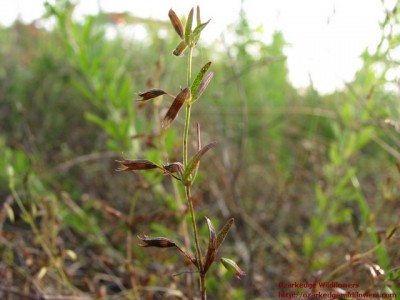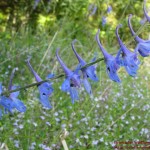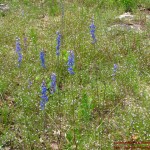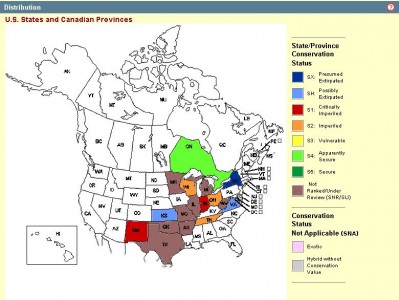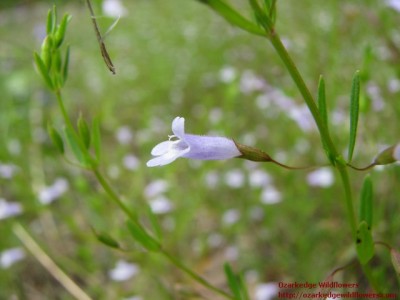You’ll first notice Ozark Calamint with your nose. While walking through a rocky glade you may suddenly experience a powerful and wonderful minty fragrance that will stop you in your tracks. That fragrance would be Ozark Calamint.
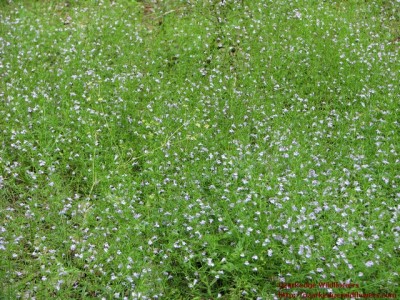 Calamintha arkansana grows in masses that release a minty fragrance with foot traffic
Calamintha arkansana grows in masses that release a minty fragrance with foot traffic
Latin Name/Common Name– Calamintha Arkansana was formerly known as Satureja Arkansana and is also known as Clinopodium Arkansana. It’s confusing that it has more than one latin name; but as far as I can tell, the most current latin name is Calamintha Arkansana. It’s a member of the mint family. This plant goes by many different common names–Arkansas mint, Ozark calamint, Wild savory, Low calamint, and Limestone calamint are just a few. The name “calamint” means beautiful mint–and it is.
Bloom Color- The bloom is light blue to lavendar or even magenta with white tips. A few plants will have flowers of pure white. To me, it looks more blue when you are standing away from the plant, but close photos or magnification show it to be more purplish. The flowers are tiny, but close inspection shows they are beautiful.
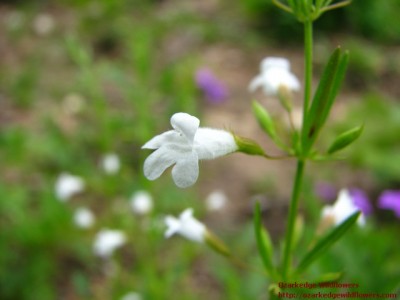 White flowers are occasionally seen
White flowers are occasionally seen
Description- With a height of only 10-12 inches and blooms that are less than half an inch long, Ozark calamint is definitely on the small side. But, it’s big when it comes to fragrance, which in potency and perfume rivals any rose or narcissus.
Calamint forms colonies through underground stolons. It could easily be used in a rock garden as a beautiful, aromatic ground cover. It’s much more aromatic than thyme. The smooth, opposite leaves are true green, sparse and slender- less than 1/2″ long. The stem is square and branching. The flowers have a tubular shape and are shaded from dark to light, with the lips being nearly white.
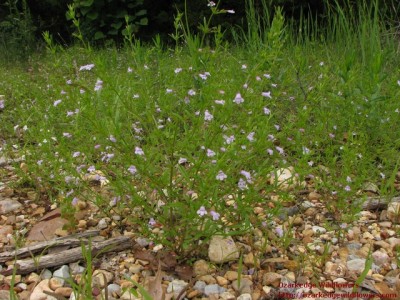 Ozark calamint loves the rocky soil of the Ozarks
Ozark calamint loves the rocky soil of the Ozarks
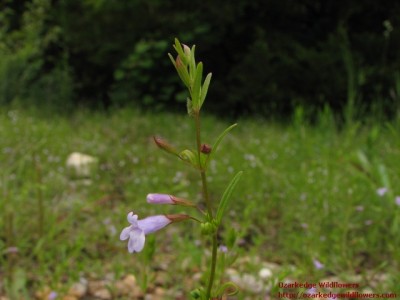 Smooth stem and opposite leaves
Smooth stem and opposite leaves
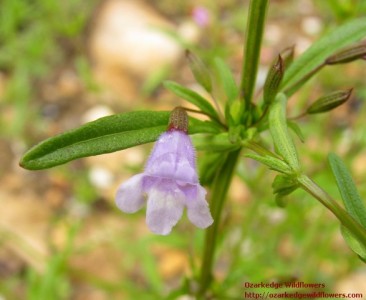 Elliptic leaf with central crease
Elliptic leaf with central crease
Bloom Time- In addition to having such a wonderful scent, this plant blooms over a long period. The main bloom time is from May to July, but it is known to bloom well into August with some sporadic blooms up until October.
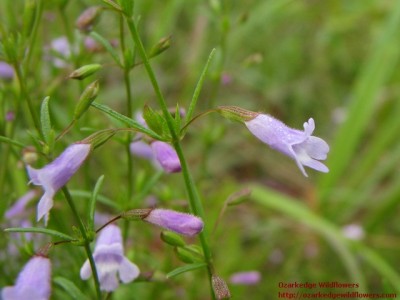 Calamintha arkansana in bloom late May
Calamintha arkansana in bloom late May
Habitat- On Ozarkedge I’ve found Calamintha Arkansana growing in full sun, in rocky areas and cedar glades on thin soil. These sites are mostly on the dry side. I’ve read that the plant also is found in moist conditions, but I have not encountered that here. Calamintha Arkansana has a strong preference for alkaline soil.
What’s Growing Neaby? On Ozarkedge, Sedum pulchelum (Widow’s Cross) grows in the same area as Ozark calamint. The bloom time of the two plants barely overlaps as the Widow’s Cross bloom cycle is ending when the Calamint is beginning. Other plants I’ve found nearby are Glandularia canadensis (Rose verbena), Manfreda Virginica, Ruella Strepens (wild petunia) and Delphinium carolinianum.
Delphinium carolinianum and Ozark calamintha put on a beautiful show together
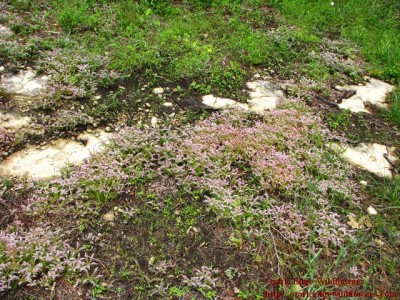 Sedum pulchelum blooming in April
Sedum pulchelum blooming in April
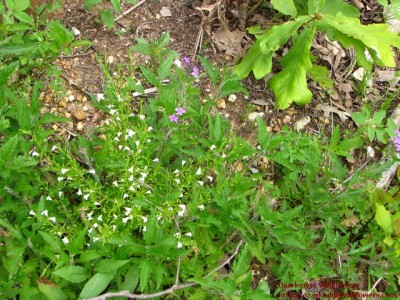 Glandularia canadensis growing with Calamintha arkansana
Glandularia canadensis growing with Calamintha arkansana
Endangered List- Sadly, the specific habitat required by Ozark calamint is diminishing and this wonderful plant is no longer found in much of its original territory. It is Extirpated in both New York and Kansas, Critically Imperiled in Indiana and New Mexico, and Imperiled in Ohio, Tennessee and Wisconsin. You can click here to go to the NatureServe Conservation status to see this comprehensive look at the latest status of Calamintha arkansana. Take a look at this distribution map and color coding of the status in each state from NatureServe.
Interesting Tidbits- I’ve read that chewing the leaves of Ozark calamint will keep your breath fresh for hours. I haven’t tried it and am certainly not recommending it. I’ve also read that it can be dried as a spice or that an excellent flavored oil can be made by infusing it. It’s been used in potpourri and I think it would be wonderful for that.
